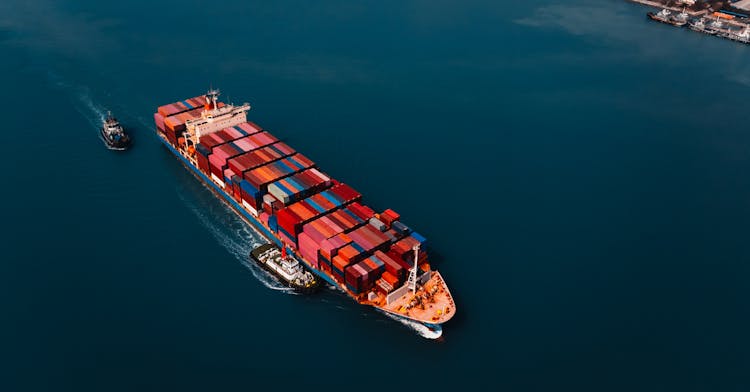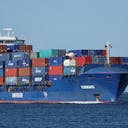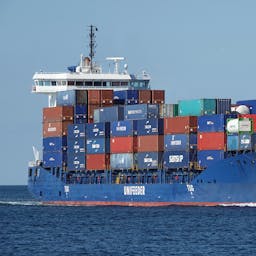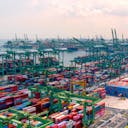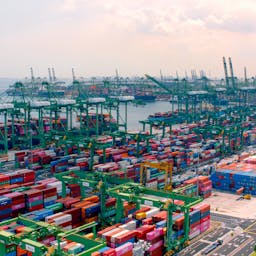Offering streamlined operations, automated processing and superior data insights, digitalisation has the potential to transform the global supply chain. But with factors such as an outdated infrastructure, lack of proactive investments and some ongoing resistance to change in play, we still have some way to go before the shipping industry has been digitally transformed.
Download the 2024 State of the Industry ReportHow can digital transformation be achieved?
The technology we use has a big role to play, but digital transformation starts with the people. Data shows 25% of cargo owners, for example, rely on legacy channels such as email for shipping activities. For digitisation to evolve, the people need to adapt and shift to using system-to-system communications. Collaboration between cargo owners, carriers, freight forwarders, technology logistics providers, terminal operators and ports is paramount. Meanwhile, banks, governments and legislators have an equally important role to play. Technologically, transforming container shipping requires a global framework that enables interoperability between platforms and facilitates the seamless exchange of data. This framework must have a unified and standardised approach to data communication across all technology platforms, modes of transportation and stakeholders. By working on the interoperability of processes, more and more businesses will be encouraged to adopt these new technologies – from replacing electronic data interchanges (EDIs) with application programming interfaces (APIs) and moving to paperless trade through digital documents such as the electronic bill of lading. Our digital shipping standards help support this move to interoperability. They are developed with input from over 100 SMEs, so we can ensure our standards align with real-world requirements. We are continually reviewing and updating these standards to ensure they address challenges we face in the container shipping industry.The benefits of digital transformation
Digitising the maritime shipping industry is a task that will yield benefits, including:- Greater efficiency through the adoption of paperless documents and processes that offer better communication between customer and carrier.
- Increased accuracy as errors associated with manual data entry and data discrepancies are minimised.
- Increased security for shipping documentation as digitising enables the use of digital signatures, encryption technologies and authentication mechanisms.
- Improved planning capabilities as digital processes enable more efficient logistics management and better resource optimisation, mitigating disruption.
- Enhanced visibility and compliance as participants gain on-demand access to real-time data, removing ambiguity and ensuring compliance with international trade regulations.
- Lower carbon emissions with efficient digital processes. JIT port calls, for example, are a low-investment way of reducing fuel usage and emissions.
What is our role in digitising the shipping industry?
DCSA was established to be the industry’s collective voice for driving digital transformation. Numerous industries such as banking, telecommunications and the airlines have benefitted from successful efforts to digitally transform their operations. Our mission is to lead the industry towards systemic collaboration by creating open-source digital standards based on shared industry requirements. These standards ensure the interoperability of technology systems, and hence, the seamless flow of digital data from end to end.Download our shipping industry report for more
To learn more about maritime digital transformation and the active role DCSA is playing, download our report. Here, you can find more about the current state of supply chain digitisation, the barriers the industry faces, and the role digital standards play.Other resources that support digital transformation
Want to know what you can do to contribute to this evolution? Here are some of the resources we have available: DCSA standards: check out our digital shipping standards, where we publish our frameworks for different processes within supply chain logistics. eBooks: DCSA have a range of eBooks that discuss container shipping and progress in its digital evolution. Glossary of Terms: Make sure you’re up to date with industry terminology by viewing our Shipping Glossary to help streamline communications. Newsroom: For DCSA updates and more, keep an eye on our newsroom for industry announcements. DCSA+: for the opportunity to collaborate with DCSA directly and make a difference, considering joining DCSA+ partnership programme.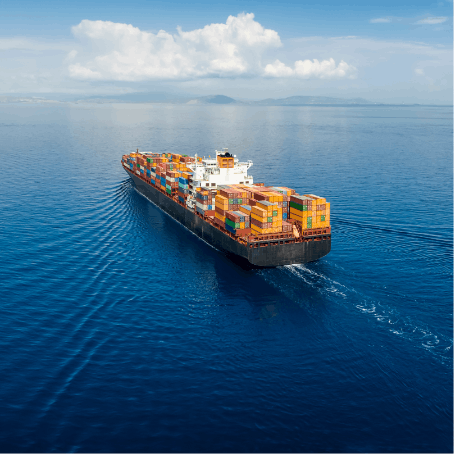
Digitalise the container shipping industry
At DCSA, we envisage a digitally interconnected container shipping industry in which customers have a choice of seamless, easy-to-use services that provide the flexibility to meet their business and sustainability goals.
